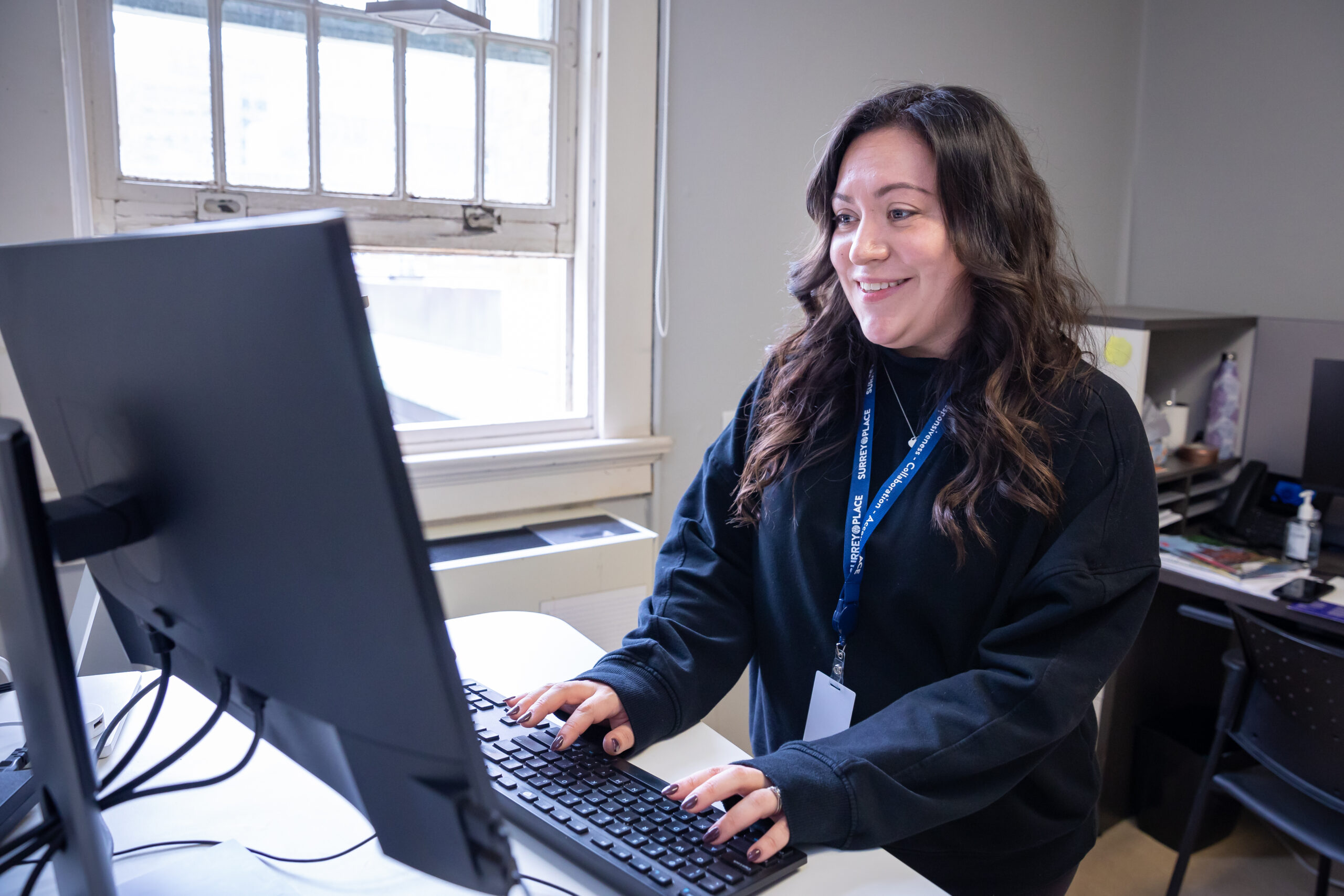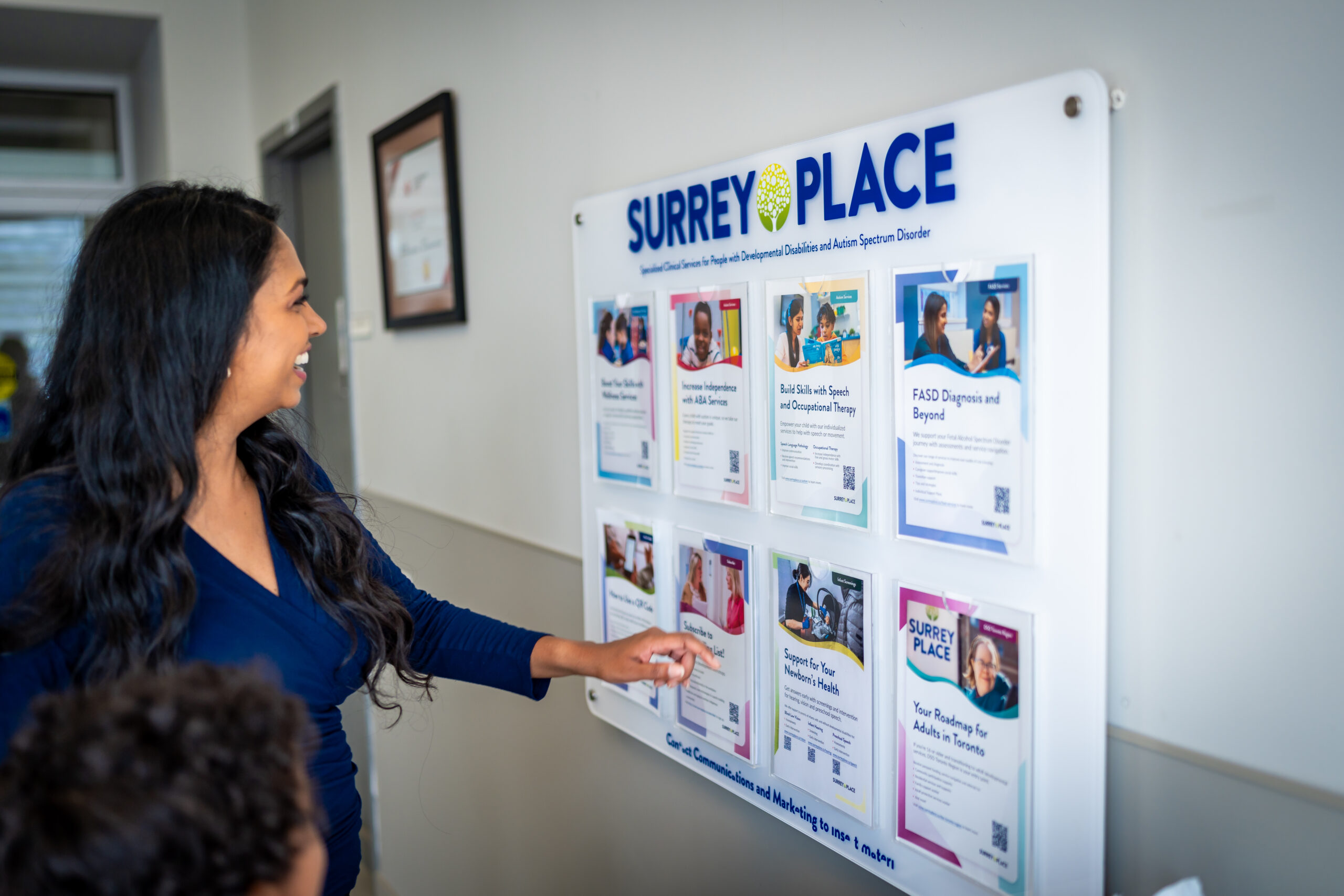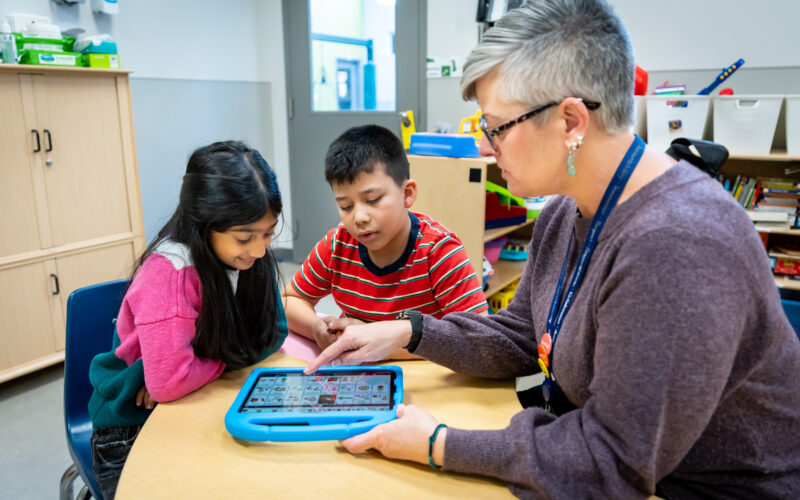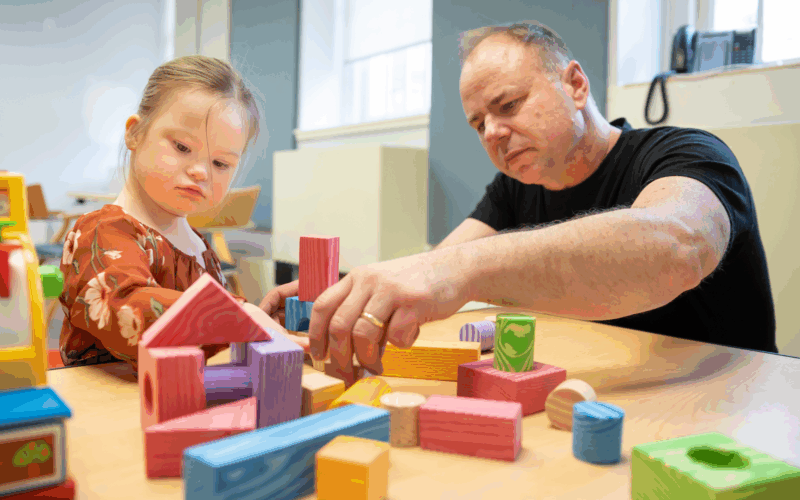Table of contents:
- Set Up Your AccessOAP Account
- Access Free Services at Surrey Place
- Explore Other Financial Supports
- Start Building Your Support Network
- Keep Records and Plan Ahead
Congratulations! You’ve taken a huge and important step by registering your child for the Ontario Autism Program (OAP).
Now what?
It’s totally normal to feel unsure about what comes next. The process can feel overwhelming—there’s a lot of information to take in, especially while managing the day-to-day needs of your family. The good news is, there are clear steps you can take right now to move forward.
We’ve put together this practical, step-by-step guide to help you get started. These five steps will help you understand what’s available, how to access support, and what you can do now while waiting for longer-term services. Whether you live in Toronto, Mississauga, Scarborough, or anywhere else in the GTA—this guide is for you.
1. Set Up Your AccessOAP Account
Once you’re officially registered for the OAP, your next priority should be setting up your AccessOAP account. AccessOAP is the digital platform that serves as the main point of connection between families and the Ontario Autism Program. It’s where you’ll manage your child’s services, track your funding eligibility, and communicate with service providers—all in one place.
Creating your AccessOAP account is simple. Visit AccessOAP.ca, click “Sign Up,” and follow the prompts. You’ll need your OAP registration information to get started. Once you’re in, you’ll find:
- Your child’s unique OAP number
- Receive updates about service availability
- Access to online tools to apply for funding and manage your profile
This platform is key to staying organized and informed as you move through the program. We recommend checking in regularly, especially to monitor changes in service availability and to respond to any messages from providers.

2. Access Free Services at Surrey Place
Even if you haven’t yet received funding, your family can begin accessing free support services through the OAP.
Foundational Family Services
At Surrey Place, we offer a wide range of free Foundational Family Services that are designed to equip caregivers with the tools, knowledge, and confidence to support their child’s development.
These services are always free for families registered in the Ontario Autism Program (OAP). They include:
- Educational workshops for caregivers
- Coaching sessions that help you apply practical strategies at home
- Family and peer mentoring
- Brief targeted counselling and consultations with professionals
- Resource supports and regular clinic days to explore multiple services and ask questions
One of the best things about these services is their flexibility. There’s no formal intake process, and you can register for as many sessions as you like, whenever you feel it’s needed. Everything is built around making families feel informed, connected, and empowered.
You can browse and register for services easily through our online calendar. No referrals are necessary, and all offerings are tailored to be accessible, supportive, and grounded in current evidence-based practices.
Caregiver-Mediated Early Years Programs
Children ages 12 to 48 months who are registered in the Ontario Autism Program (OAP) are eligible for the Caregiver-Mediated Early Years (CMEY) Services. After their eligibility has been confirmed, AccessOAP emails caregivers an invitation to explore and register for one of the CMEY programs.
In the Toronto region, the Caregiver-Mediated Early Years program is delivered by Toronto Autism Service Network (TASN), a partnership of seven agencies, including Surrey Place, that offers one or more of the six types of caregiver-mediated early years programs.
At Surrey Place, we provide Pivotal Response Treatment (PRT), which is a 12-week, evidence-based intervention program that uses applied behaviour analysis (ABA) principles. PRT uses your young child’s (ages 1-4 years) motivation to teach communication and social engagement. You will learn the core strategies of the program so that you can use them in day-to-day routines and interactions with your child.
Once you receive an invitation from AccessOAP, you can contact service providers, like Surrey Place, to ask questions about the programs they offer and decide which program is best for your child. When you choose the program that’s right for your child, you register directly with the service provider.

Entry to School
Our Entry to School Program for autism supports families with children who are entering kindergarten or Grade 1 for the first time. The program includes several stages including a six-month group program focusing on building skills that prepare children to start school, transition supports for children when they begin school, and additional consultations to support a successful transition for the first six months a child is in school.
Our Entry to School Program is offered at six agencies in many locations across Toronto, including Etobicoke, East York, North York and Scarborough. During intake, families will choose their preferred location, service in English or French, school board, semester start date, and time of day, all depending on availability. Eligible participants must be registered with the Ontario Autism Program (OAP) and have received an invitation letter to participate in the Entry to School Program.
Urgent Response Services
Urgent Response Services (URS) are a time-limited, rapid service response to a specific need, to prevent further escalation of risk of harm to self, others and/or property. For those deemed eligible, the OAP URS will provide time-limited services and supports, addressing a specific need for up to 12 weeks. This may include:
- Short-term interdisciplinary consultation via a mediator model approach
- Respite services
- Service coordination to oversee the service plan and also provide navigation to other services within or outside the Ontario Autism Program
Families can self-refer or can be referred by a clinician, care coordinator or other relevant professionals. Upon referral, you will be screened to determine if you are eligible. If you are eligible, an Urgent Response Services coordinator will work with you to develop the intervention plan.
If you are not eligible, the coordinator will help the family connect with other services within or outside the Ontario Autism Program.
If these services don’t meet your needs, you can also purchase Core Clinical Services designed for behavioural challenges out-of-pocket to get started right away.
3. Explore Other Financial Supports
Beyond the OAP, there are other valuable financial supports available to families in Ontario. Two key programs are Special Services at Home (SSAH) and the Assistance for Children with Severe Disabilities (ACSD).
What is Special Services at Home (SSAH)?
Special Services at Home (SSAH) provides funding to help families pay for respite care and programs that promote their child’s skill development and independence. It’s a flexible source of support that can help ease the day-to-day challenges of caregiving. You can use it for:
- Hiring a support worker
- Enrolling your child in a community program
- Accessing specialized learning opportunities
- Directly reimburses families for costs related to caregiving and personal growth programs.
What is Assistance for Children with Severe Disabilities (ACSD)?
Assistance for Children with Severe Disabilities (ACSD), on the other hand, is a monthly financial benefit available to families with low to moderate incomes. This program helps cover additional costs associated with raising a child with a severe disability, such as:
- Transportation
- Special equipment
- Medical supplies
- Eligible families may also receive a drug and dental card to help with health-related expenses.
Both of these programs can make a meaningful difference while you wait for or complement OAP services. More information, including application forms and eligibility criteria, is available on the Ontario government’s website.
4. Start Building Your Support Network
The journey of raising a child with autism can be isolating at times—but it doesn’t have to be. Building a network of support is one of the most important things you can do for yourself and your family. Whether it’s finding other caregivers to talk to, joining a local support group, or participating in advocacy efforts, connection matters.
At Surrey Place, we offer several opportunities to help families stay connected:
- Caregiver Peer Mentorship Program – matches you with someone who has walked a similar path and can offer empathy, insight, and practical advice.
- Family Advisory Council – gives caregivers a voice in shaping the programs and services we provide, ensuring they reflect the real needs of our community.
- Family Connections Facebook Group (external Facebook link) – a safe online space where families across Ontario can share experiences, ask questions, and support one another.
- Exceptional Caregiver Life – a podcast, hosted by Surrey Place’s Family Advisory Council, about real and compassionate conversations about the highs and lows of caring for individuals with disabilities and complex needs.
Each of these opportunities is a place to find encouragement, practical tips, and—perhaps most importantly—a sense of community.
5. Keep Records and Plan Ahead
It might not feel urgent now, but organizing your documents from the beginning can save a lot of stress later on. You can start by keeping track of:
- Emails
- Funding notices
- Clinical assessments
- Receipts for any services you use

These records will be essential when it comes time to renew funding, advocate for school supports, or plan for future services.
We recommend setting up a simple filing system—either physical or digital—that’s easy to maintain. Easy tip? Label folders by service type or year and keep everything related to your child’s support in one place.
Looking ahead, consider what transitions may be coming next: entering school, becoming a teenager, or preparing for adult services. You may also want to begin learning about long-term financial planning, including government benefits, legal guardianship, and setting up a support network that can evolve with your child’s needs.
OK, let’s get started
Navigating the Ontario Autism Program (OAP) can feel complex, but you don’t have to figure it out on your own. These five steps are designed to help you take action, access services, and build a strong foundation for your child’s future.
Whether you’re exploring other funding, attending a workshop, or simply connecting with another parent for advice, each step you take brings your child closer to the support they need to thrive.
At Surrey Place, we’re here to walk alongside you at every stage of the autism journey. From your first registration to long-term planning, our team is ready to support, guide, and empower your family.
Ready to get started? Connect with us today and explore how we can support you: Register with Surrey Place
Need more information? Stay connected by signing up for our newsletter.


